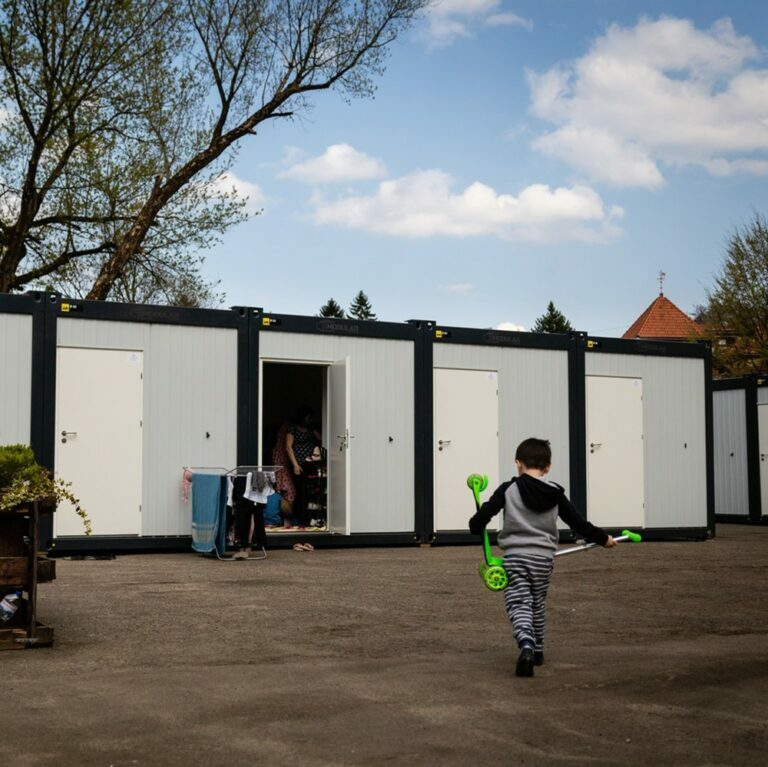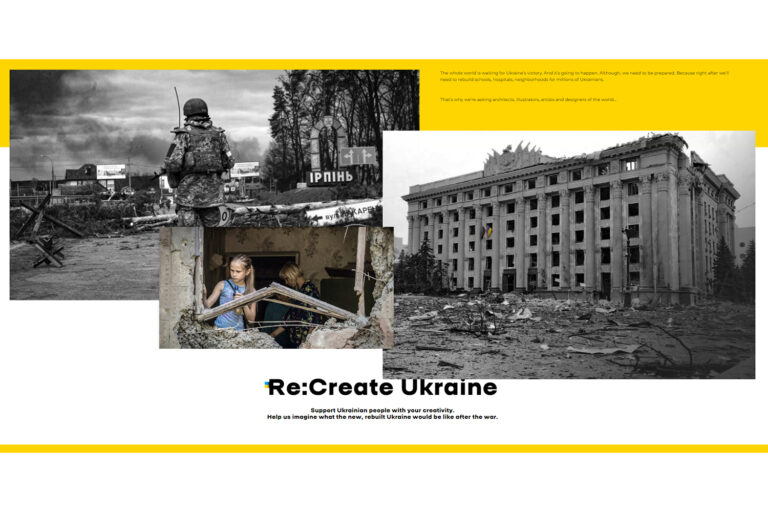
Thousands of homes have been destroyed or damaged during the full-scale war in Ukraine. The Russian occupiers have already left many Ukrainians without their property. In addition, millions of people have been forced to evacuate from ‘hot’ spots to safer settlements within the country. All these people need somewhere to live. The Ukrainian government is already working on mechanisms to address these issues, and architectural firms from various Ukrainian cities are designing solutions to help temporarily displaced persons settle in existing spaces or find shelter in modular buildings.
As of April 8th, according to the Minister of the Development of the Communities and Territories of Ukraine, Oleksiy Chernyshov, more than 14,000 residential buildings, including 800 apartment buildings, had been completely destroyed, and more than 72,000 residential buildings, including 3,200 apartment buildings, had been damaged. And according to the Minister of the Digital Transformation of Ukraine, Mykhailo Fedorov, as of April 11th, more than 66,000 applications for compensation for damaged or destroyed housing had been submitted via the “Diia” application. Unfortunately, the war continues and the situation is only getting worse.

On April 19th, the Ukrainian government approved a procedure for the rapid construction of temporary housing for IDPs, and regional administrations are looking for land to place such buildings. The President’s Office also announced a program to buy housing for IDPs from developers.
In the Ukrainian architectural sector, there are ongoing debates on the methods of construction of temporary housing, as well as the restoration of cities and their infrastructure. At the same time, Ukrainian architectural firms are already involved in resolving some issues. They are developing and implementing projects that allow migrants to be housed in available spaces with the maximum possible comfort and privacy in these conditions. Architects are also developing modular housing projects, which will allow people to wait for the reconstruction of destroyed cities after the victory of Ukraine. All these projects can be implemented both at the state level and with the help of investors.
The #ReCreateUA project has also been launched for architects from all over the world. Creators can choose one of the destroyed or damaged buildings in the gallery and create a visualization of its restoration.


slideshow
Oleh Drozdov’s Kharkiv Architectural Bureau, Drozdov & Partners, together with Replus bureau and Ponomarenko Bureau, is developing and implementing projects for centers for internally displaced persons in Lviv. Their solution is modular frames made of cardboard pipes, which are relatively easy to install, and they can be reused and recycled. Hundreds of people in different locations in Lviv have been housed under this project. The team continues to raise funds for supplies for the centers.


Oleh Volosovsky’s Loft Buro has created a project of modular structures which can be placed in gyms, showrooms, offices or even bomb shelters, so that they can be used as housing. The project was created in collaboration with factories and private workshops. Rooms equipped with these structures can be converted into hostels after the victory.

The agency +kouple, together with the 22F workshop, has developed a concept for the temporary accommodation of migrants in large open spaces with minimal single-use materials.

The Balbek Bureau of Slava Balbek has developed the RE:Ukraine modular town system. The goal of the project is to maintain a good standard of living for people who have been forced to leave their homes. They propose using a wooden-frame system, and combining different types of modular structures (residential, public, kitchen and sanitary) according to the designer’s obligations.

Dekart Studio has presented a concept of modular housing for those who have lost their homes during the war. They propose round houses, which can be made on the spot using local materials, to be placed in areas that will be rebuilt after the victory of Ukraine. It is also envisaged that such buildings can be used as permanent housing or remodeled into country hotels.

The development company All Right Development & Investment has developed a project of a town with individual houses, called Palyanytsia House. It is proposed to use geodetic domes for construction, which do not require a foundation and have free planning due to the lack of columns. The company plans to build these structures in relatively safe regions of the country and invites investors to join, because in the future, the structures can be reformatted for commercial purposes.
The FORMA architectural firm and the Museum of Contemporary Art have developed Emergency Art Shelter. It is a temporary home for musicians, artists, and architects who have been forced to relocate due to the war. The first residence is planned to be located near Uzhhorod. The building is made of prefabricated elements which can be used for a long time without additional repair costs. In the future, the authors plan to develop it into a “cultural village”.

Other countries are also helping Ukraine with ready-made temporary housing solutions. In early April, the United States transferred 18 modular homes to Transcarpathia. These are used in the United States to provide shelter after natural disasters. According to the decision of the head of the Transcarpathian OVA, the houses have been used to accommodate people whose homes were destroyed in Bucha and Hostomel.

The Polish government has given Lviv more than 300 houses to house migrants. The first modular town in the city was opened on April 19th.

